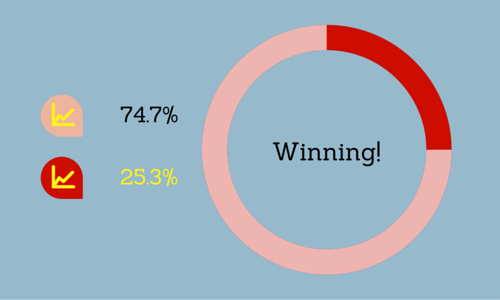Sep 22, 2020

What does success look like for your nonprofit?
You've devised a strategy and are plugging away towards your goals. But how do you know if you're on the right trajectory? You won't, unless you are measuring the impact of your strategy as you go.
In this age of free and in-depth analytics, there's no reason to not be measuring your impact. Here are a few pointers to get you started.
Refer to Your Strategy Plan
Your Strategy Design should have spelled out your objectives and the specific action you want people to take.
From there, it's easy to figure out how to measure whether or not people have actually taken action, and, as an intermediary metric, how many people you're reaching.
Use Your Website Analytics
Take advantage of your access to Google Analytics, a free website analytics tool that integrates with Google Adwords. The great thing about Google Analytics is that you can measure just about anything that happens on your website.
You can easily view which pages people have visited, where they're visiting from, what type of device they're using, how much time they spend on your site, and which pages are most popular. We generally recommend that people drive traffic back to their website from every other platform, because that's where they can engage more deeply with your organization AND where you can gather the most information from their visit.
Beyond just tracking visits, you can program goals or "conversions" which allow you to add key indicators to your monthly dashboard monitoring reports. So you can quickly see how many donations you've received, how many new members have signed up, what advocacy actions have been taken, or simply how many people visited a key section of your website.
Conversions allow you to also track the process. So, for example, you can see how many people are clicking on your "Donate" button, but dropping off in the process and not completing the donation. That insight is key in spotlighting any barriers to the action you want them to take, in addition to letting you know how you're doing each month.
Social Media Monitoring
Every social media tool offers its own analytics tool. Facebook is rigged with a robust Insights dashboard. Twitter Analytics gives you a running count of impressions, engagements and engagement rate.
Remember that the quality of your interactions is more important than quantity. In other words, engagement is more important than total number of fans. Take a look at:
- How many people are retweeting your tweets, commenting, liking or sharing your content?
- Who are they? Are they part of your target audience? How do they matter to the organization?
- Are they taking the action you want them to?
Email Marketing
Your email strategy is one of the most insight-laden pieces of your overall communication strategy.
- What subject lines and topics provoke the highest open rates?
- Which articles are getting the most clicks?
- What action are people most likely to take from an email appeal?
- And WHO from your list is opening your emails and taking action?
Set Your Targets
Once you're clear on everything you can measure, set some solid goals for yourself. Three-month, six month and 12-month goals will help keep you on track, encourage you to dig deeper and do things differently if you find you're not meeting your goals, and give you reason to celebrate if you are!
About the Author: Upleaf is a consulting firm based in the Denver, Colorado metro area, dedicated to helping nonprofits flourish through strategic online communication and creative technology solutions.